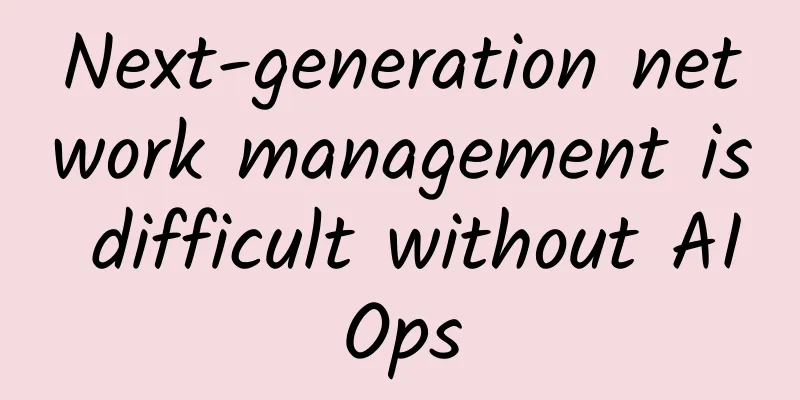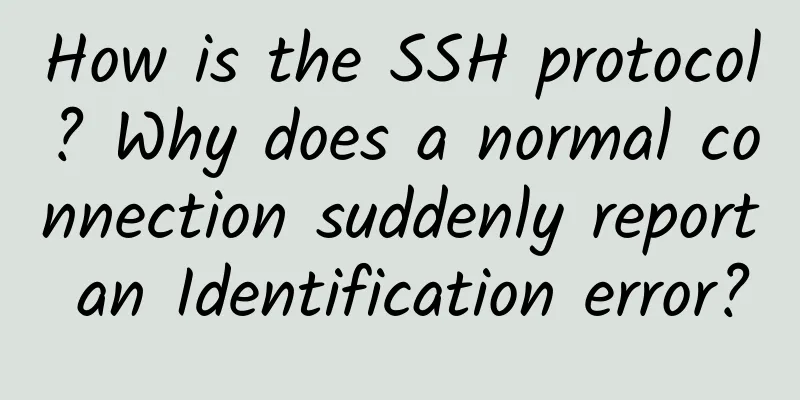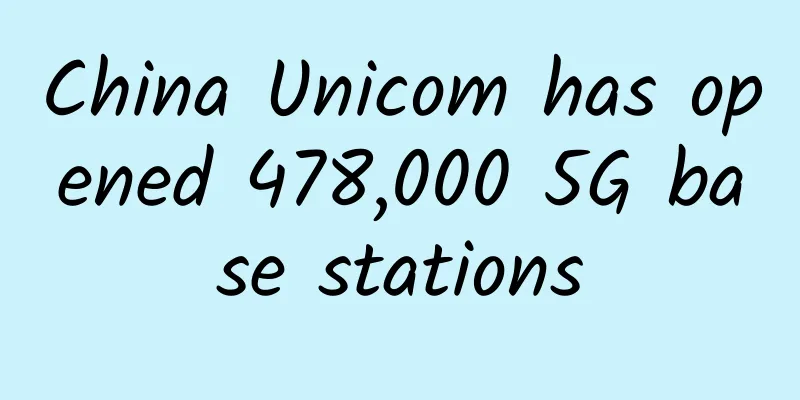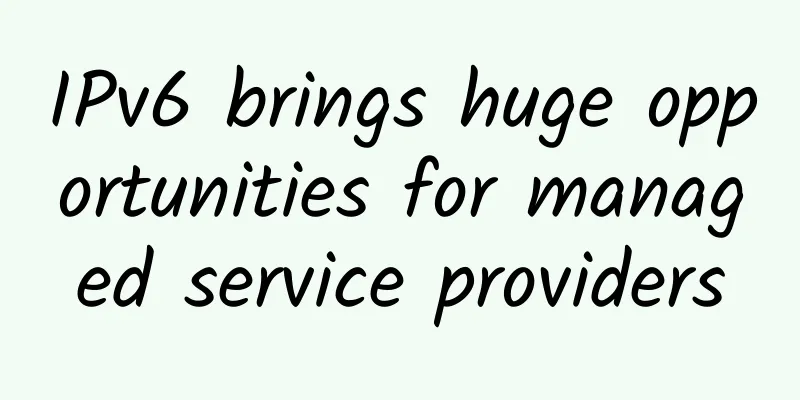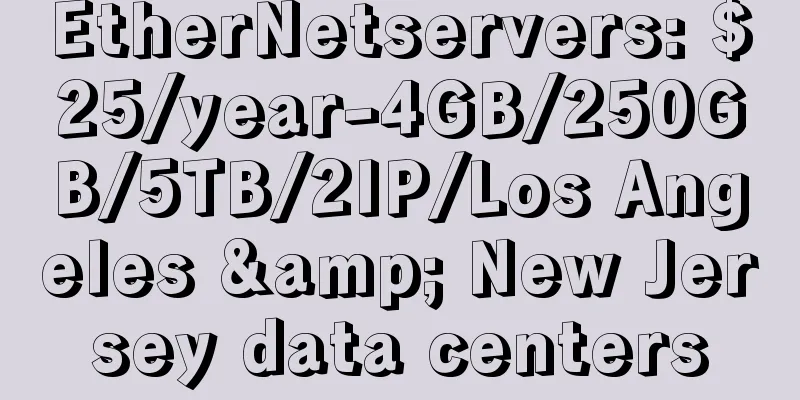IPv6 just increases the number of addresses? In fact, the truth is not that simple!
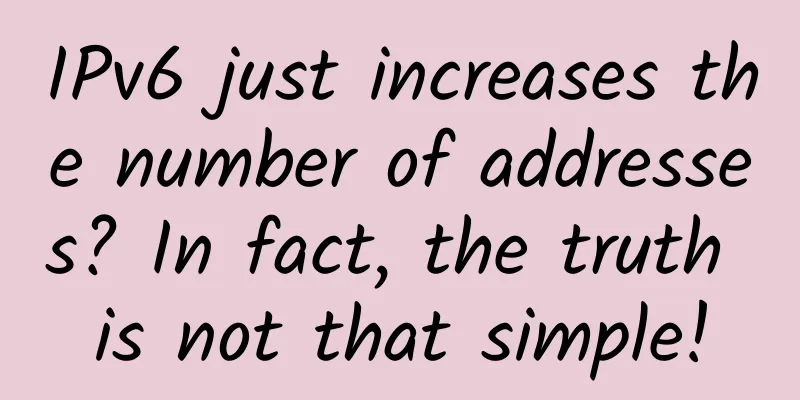
|
On October 20, at the 6th World Internet Conference held in Wuzhen, Liu Guiqing, deputy general manager of China Telecom, said: "China Telecom's metropolitan area network, mobile network, backbone network, IDC, etc. have all achieved commercial deployment of IPv6. Currently, we have built the largest IPv6 network with the most complete business forms" and "IPv6 addresses have been allocated to more than 300 million users." This news once again aroused widespread public attention to IPv6. So the question is, what exactly is IPv6? What is it used for? What exactly does IPv6 mean? In fact, IPv6 is not a new thing. It was born as early as the 1990s. I believe that people who work in IT or communications have heard of it to some extent. The full name of IPv6 is Internet Protocol version 6. Internet Protocol is translated as "Internet Protocol". Therefore, IPv6 is the sixth version of the Internet Protocol.
Any network work is based on protocols. Protocols are the rules and standards for the operation of the network. What we now call surfing the Internet is the Internet. The Internet is based on the TCP/IP protocol suite, and IP is the core component of this protocol suite. Protocols corresponding to the TCP/IP model IP is a network layer protocol. Its main task is to transmit data according to the addresses of the source host and the destination host. You must have heard of IP addresses often. Yes, IP addresses are a concept in the IP protocol. If you want to connect to the Internet, you need an IP address, just like if you want to send a letter, you need a house number address. Xiaozaojun's IP address (please don't attack me ) Since IPv6 is version 6, it means there are older versions before it. The one we are using widely now is IPv4, which is version 4.
Why should IPv6 replace IPv4? The main reason is that there are not enough addresses. IPv4 has been used for more than 30 years. In the early days, the Internet was designed only for the US military, and it was not considered that it would become so large and become a global network. Especially after entering the 21st century, with the rapid popularization of computers and smart phones, the Internet has begun to develop explosively, more and more Internet-connected devices have appeared, and more and more people have begun to connect to the Internet. This means that more and more IP addresses are needed.
According to statistics from Internet data research institutions, there are 7.6 billion people in the world, and the total number of Internet users has exceeded 4 billion (January 2018). How many IP addresses does IPv4 have in total? The answer is 2 to the power of 32, which is about 4.29 billion. Therefore, the IPv4 address pool is close to exhaustion and cannot meet the needs of Internet development. People urgently need a higher version of the IP protocol and a larger number of IP address pools. (It's a bit like upgrading landline phone numbers.) In fact, the problem of insufficient addresses is not something that has only been discovered in recent years. As early as 1990, IETF (Internet Engineering Task Force, founded in late 1985, is the most authoritative technical standardization organization for the global Internet) began planning the next generation protocol of IPv4. They also established IPng (next generation IP) and brought together a group of people to promote related work.
In 1994, representatives of various IPng groups formally proposed the IPv6 development plan at the IETF meeting held in Toronto. The proposal was not approved until November 17 of the same year, and became the IETF draft standard on August 10, 1996. In December 1998, IPv6 was officially launched by IETF, which is the Internet standard specification RFC2460. On January 22, 2003, IETF released the IPv6 test network, namely the 6bone network. With more than ten years of development, IPv6 has been supported by many communication network and terminal equipment manufacturers and has made great progress. For example, the Windows computer operating system that we use the most has supported IPv6 since Windows 2000. By the time of Windows XP, it had entered the product completion stage. And Windows Vista and later versions, such as Win7, Win8, Win10, etc., have fully supported IPv6. IPv6 options in Windows 10 On June 6, 2012, the Internet Society held a special "World IPv6 Launch Day". On this day, many well-known websites (such as Google, Facebook and Yahoo) officially began to permanently support IPv6 access. What will IPv6 bring us? First of all, the most important point is the expansion of the address pool mentioned above. The IPv4 address pool is about 4.29 billion. How many can IPv6 reach? The quantity is as follows: 340282366920938463463374607431768211456… No need to count, your brain will go crazy if you count to the end... Simply put, it is 2 to the power of 128. This number is enough to allocate an IP address to every grain of sand on Earth. How is this quantity value obtained? It is determined by its address bit length. If written in binary, an IPv6 address is 128 bits. However, this is not very convenient (it won't fit on one line). Therefore, it is usually written in hexadecimal, shortening it to 32 bits. The 32 bits are divided into 8 groups of 4 bits each. Therefore, the following is a standard, legal IPv6 address example:
Attention! IPv6 addresses can be abbreviated! The leading 0 in each number can be omitted. For example, the following address:
The red "0" can be omitted, becoming:
Furthermore, if there is a group or several consecutive groups of 0s, it can be abbreviated as "::", that is:
Isn’t it amazing? Note that an IPv6 address can only have one "::". Why? It's very simple. Look at the following four addresses. What will they look like if they are abbreviated?
Yes, they are both 2001::25de::cade, which conflicts. Therefore, this address is illegal and is not allowed to exist. There are many technical details about IPv6 addresses, which will not be discussed here due to space constraints. In addition to the number of addresses, IPv6 has many advantages, such as:
Don’t understand? It doesn’t matter. In short, everyone should remember that IPv6 has many advantages. Why hasn't IPv6 replaced v4 quickly? Since IPv6 has so many advantages, why hasn't it completely replaced IPv4 even though it has been around for 20 years? There are many hidden issues here... To put it bluntly, it is mainly about interests. If the predictions of experts at the beginning of this century were true, our IPv4 addresses would have been exhausted tens of thousands of times already. However, up to this day, everyone is still using IPv4, and for ordinary people, there is no problem of being unable to access the Internet due to insufficient addresses. Why is this? Because in addition to IPv6, we also have some technologies that can alleviate the address shortage in disguise. For example, NAT (Network Address Translation). What does NAT mean? When we surf the Internet at home or in the company, your computer must have an address similar to 192.168.0.1. This address is a private network address, not a public Internet address. Private and public networks Each small local area network will use a private network address of a network segment, and then convert it to a public network address when connecting to the outside world. In this way, dozens or hundreds of computers only need one public network address. You can even use private networks within private networks, NAT within NAT, and so on. This will greatly save the number of public IP addresses. It is precisely because of this that we have been able to survive until today and still have access to the Internet. However, NAT also has many disadvantages. Although it is convenient for private network addresses to access Internet addresses, it is difficult for Internet addresses to access private network addresses. Many services will be restricted, and you can only solve them through complex settings, which will also affect the processing efficiency of the network. So, just like a car, although everyone can share it, everyone still wants to own it independently. Scarcity makes things valuable. The scarcer the address, the more valuable it is. The happier the person who holds the address is. Who is happy? Operators and ISPs (Internet Service Providers). They are like dealers, applying for IP addresses from the upstream (Internet Corporation for Assigned Names and Numbers, ICANN), and then selling them to downstream users. Scarcity doesn't matter, anyway, they can definitely make more money from the price difference. If you go to a carrier or ISP to buy bandwidth, or rent cloud services, those with public addresses will definitely be much more expensive than those without public addresses. IP address product of a certain cloud In addition to making money from addresses, upgrading to support IPv6 also means a huge investment for operators and ISPs. Now new equipment basically supports it, but after all, there are still some old equipment. If you replace it before the end of its service life, you will lose money. Therefore, operators and ISPs do not actually like IPv6 very much. As for equipment vendors or mobile phone and computer manufacturers, they have generally supported IPv6 long ago out of foresight, so they do not have many opinions and cannot decide anything. IPv6 has relevant certification In the early days of our country, we actively promoted the popularization of IPv6. At that time, because the education network supported IPv6, many students in school could access 404 websites (you know).
The "Great Wall" did not work for IPv6 at the time. Later, for various reasons, our country slowed down the pace of IPv6 promotion and was surpassed by the United States and other countries. The IPv6 penetration rate fell outside the top 30 in the world. Now, our country has once again begun to vigorously promote the development of IPv6. In November 2017, the General Office of the Communist Party of China Central Committee and the General Office of the State Council issued the "Action Plan for Promoting Large-Scale Deployment of Internet Protocol Version 6 (IPv6)" and issued a notice requiring all regions and departments to conscientiously implement it in light of their actual conditions. In May 2018, the Ministry of Industry and Information Technology also issued a notice on the implementation of the "Action Plan for Promoting Large-Scale Deployment of IPv6", further proposing clear IPv6 implementation tasks and indicator requirements. A big part of the reason why we urgently need to push forward this is to promote the standardization of basic communication equipment, lay the foundation for 5G, the Internet of Things, the Industrial Internet, and make full preparations for the comprehensive realization of "Internet of Everything". Especially the industry Internet and industrial Internet, which are now entering a stage of rapid development, have a huge demand for addresses (according to forecasts, the number of IoT connections will exceed 27 billion in 2025), and IPv6 is urgently needed. If billions of people can still barely use IPv4, IPv4 will definitely not be able to hold up once the Internet of Things comes into being. In addition, IPv6 also involves national network security and network sovereignty. As we all know, we need to use DNS (Domain Name Resolution) to surf the Internet. When we visit www.baidu.com, we need to send this address to the DNS server, and the server returns an IP address so that we can visit Baidu's website. DNS Lookup In the IPv4 stage, there are only 13 global DNS root servers, 1 primary and 12 secondary. Among the 13, 10 are in the United States, and the other 3 are in the United Kingdom, Sweden and Japan. If a special situation occurs and the DNS service is cut off by the opponent, our Internet will be completely semi-paralyzed. With IPv6, the situation is different. On November 28, 2017, the "Snowman Project" initiated by the Next Generation Internet National Engineering Center has completed the installation of 25 IPv6 DNS root servers around the world. China has deployed 4 of them, consisting of 1 main root server and 3 auxiliary root servers. Snowman Project In other words, under IPv6, we have a certain degree of "network security" and are no longer controlled by others. Finally, let me tell you a little trick - how do you know if your current mobile phone or computer supports IPv6? It's very simple. Open the website Ipv6-test.com and it will show you whether you support it: Supported means support In fact, you can also see that most of the current network environments that support IPv6 are dual-stack environments, that is, they support both IPv4 and IPv6. When we connect to the operator's LTE network, it generally assigns an IPv4 address and an IPv6 address. In a dual-stack environment, users automatically choose to use IPv6 or IPv4 protocol to connect to remote services. If the server domain name supports IPv6, the client will use IPv6 protocol to connect to the server first; when the server domain name only supports IPv4, the client will use IPv4 protocol to connect to the server and complete the request. |
<<: Introduction and solution of TCP sticky packet and half packet (Part 1)
>>: Remember 3 parts, 2 addresses, and 1 formula, and you can easily divide subnets
Recommend
Hostodo: Las Vegas/Miami NVMe hard drive VPS from $19.99 per year
Hostodo is a foreign VPS hosting company founded ...
Connecting cloud, data and intelligence, Inspur Network aims to build a fully connected network based on business in 2018
[51CTO.com original article] On August 29, the tw...
80VPS: Hong Kong/US CN2 server from 350 yuan/month, cluster server from 800 yuan/month
80VPS is an early-established Chinese hosting com...
Talking about HTTP connection related knowledge
[[374909]] This article will first introduce the ...
SpartanHost large hard disk VPS restock, 1TB disk 10Gbps bandwidth monthly payment from $6
Those who need a large hard disk VPS or storage V...
Will the laser in a broken optical fiber harm us?
Optical fiber is an important component of commun...
Hosteons: New 1Gbps bandwidth KVM host starting at $21/year, AMD Ryzen CPU+NVMe high-performance host starting at $24/year
In December last year, we shared the news that Ho...
Report shows 33% of enterprises plan to deploy Wi-Fi 7 by 2024
Wi-Fi 7 is emerging as one of the most important ...
5G has already become popular. Is it cost-effective to buy a 4G mobile phone now?
At the beginning, I actually don’t recommend anyo...
iOVZ: Hong Kong independent server from 480 yuan/month, CMI line 100M bandwidth, South Korea SK data center VPS 30% off from 48 yuan/month
iOVZ is carrying out a Double 12 promotion, with ...
spinservers New Year promotion: $39/month-E3-1280v5/32GB/1TB NVMe/30TB@10Gbps
spinservers has released several special packages...
MU-MIMO technology: the key to turning slow networks into lightning-fast ones
In recent years, with the rapid development of wi...
Are there many pitfalls when porting your number? These users can't even do it
In the week since the black hole photo was releas...
Recommended DNS public servers
114 Public DNS Universal high-speed version: DNS ...
iONcloud: 15% off cloud hosting in San Jose/Los Angeles, Linux/Windows available
iONcloud is a cloud hosting platform opened by Kr...
